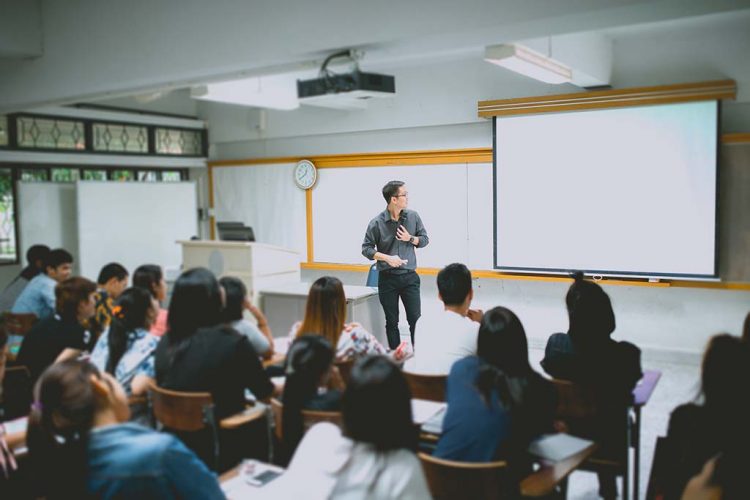Top Primary Science Tuition Singapore to Help Your Child Excel
Top Primary Science Tuition Singapore to Help Your Child Excel
Blog Article
A Comprehensive Overview to the Various Discovering Methods in Key Science Direction
The expedition of varied understanding approaches in key scientific research guideline offers an opportunity for teachers to boost pupil engagement and comprehension dramatically. By taking a look at hands-on learning strategies, inquiry-based techniques, and joint strategies, we can identify reliable methods that provide to various learning styles.

Hands-On Learning Techniques
Hands-on understanding techniques play a crucial duty in primary scientific research direction, involving trainees in active expedition and testing. These methods permit learners to interact directly with products and sensations, promoting a much deeper understanding of clinical ideas. By making use of manipulatives, versions, and real-life experiments, teachers develop an environment where pupils can observe, assume, and test their ideas.
Such strategies not just improve comprehension but likewise grow important thinking and analytic skills. When trainees join activities like developing basic makers, growing seeds, or conducting chemical reactions, they are motivated to ask questions and look for solutions with their very own monitorings. This experiential strategy assists to debunk intricate clinical principles, making them extra relatable and obtainable.
In addition, hands-on learning advertises partnership among peers, as students usually operate in groups to perform experiments or share searchings for. This synergy not only enriches their knowing experience however also develops essential social abilities. Eventually, integrating hands-on techniques in primary scientific research direction promotes a lifelong love of learning and curiosity about the all-natural world, laying a solid foundation for future scholastic pursuits in science and past.
Inquiry-Based Learning
Inquiry-based understanding is a training strategy that encourages students to ask concerns, explore sensations, and create their own understanding of clinical concepts. This approach changes the emphasis from standard teacher-led guideline to an extra student-centered experience, where students take the initiative in their instructional trip. By cultivating curiosity, inquiry-based discovering promotes much deeper interaction with the material, permitting trainees to check out topics in a purposeful context.
In practice, this method frequently entails hands-on experiments, monitorings, and crucial thinking tasks that straighten carefully with the clinical method. Trainees are urged to formulate hypotheses, style investigations, and examine information, which grows essential abilities such as logical and problem-solving thinking. The function of the instructor in this framework is to promote exploration, leading students with the inquiry process while motivating independent idea and collaboration.
Moreover, inquiry-based understanding nurtures a feeling of possession over the understanding procedure, inspiring trainees to pursue expertise proactively. This method not just improves understanding of clinical ideas however also promotes a lifelong love for learning, equipping students with the skills needed to browse an increasingly intricate globe.
Collaborative Understanding Approaches
Collective knowing techniques empower pupils to take part in purposeful communications with peers, cultivating a common duty for their educational results. In primary science instruction, these methods urge learners to collaborate to explore clinical concepts, solve issues, and perform experiments (primary science tuition Singapore). By taking part in team tasks, this article students can take advantage of diverse point of views, enabling richer understanding and retention of scientific knowledge
One secret element of joint discovering is the focus on interaction skills. Pupils must express their ideas, pay attention proactively to others, and work out concepts, every one of which are crucial proficiencies in both real-world and academic contexts. This social communication not just boosts their understanding of clinical concepts yet likewise advertises synergy and dispute resolution abilities.
When students see the worth of their payments within a group, they are more most likely to take possession of their understanding journey. Generally, incorporating collective discovering techniques in main scientific research direction cultivates a vibrant understanding setting that prepares trainees for future academic and social obstacles.
Technology Integration in Scientific Research
The assimilation of technology in primary scientific research guideline boosts learning experiences by supplying cutting-edge devices and sources that support different teaching approaches, consisting of joint discovering - primary science tuition Singapore. Using digital platforms, simulations, and interactive applications enables trainees to engage deeply with clinical concepts, helping with a much more hands-on strategy to understanding
Digital laboratories, for example, allow students to perform experiments securely and effectively, promoting inquiry-based understanding. These devices can mimic real-world clinical situations, permitting pupils to envision intricate procedures that would certainly be tough to replicate in a typical class setup. Moreover, technology fosters interaction and partnership among students, as they can share findings and collaborate on projects with on the internet platforms.
Furthermore, multimedia discussions and instructional video clips can improve lessons by accommodating varied discovering designs, making abstract ideas much more available. Data evaluation tools likewise equip students to gather and translate scientific information, enhancing crucial assuming abilities. Source Generally, the calculated consolidation of modern technology in key scientific research guideline not only boosts interaction visit the website yet likewise prepares pupils for a highly advanced culture, outfitting them with essential abilities for future scientific endeavors.
Distinguished Guideline Techniques
Separated guideline approaches are vital for attending to the varied requirements of students in key science education and learning. These methods enable educators to customize their training techniques to suit varying abilities, rate of interests, and discovering designs within the classroom. By utilizing separated instruction, instructors can develop a comprehensive atmosphere that cultivates interaction and boosts understanding of clinical principles.
One effective method is to utilize adaptable grouping, which enables trainees to team up with peers at comparable ability levels or with differing viewpoints. This approach urges peer learning and advertises essential thinking. In addition, using options in assignments can empower students, permitting them to choose projects that reverberate with their rate of interests while still meeting curricular objectives.
Additionally, integrating tiered tasks is an additional useful method. Deliberately tasks with differing levels of complexity, teachers can guarantee that all students are appropriately tested, no matter of their effectiveness. Utilizing formative analyses to assess comprehending further makes it possible for teachers to readjust their training techniques dynamically, making certain that each student obtains the support they need.
Inevitably, carrying out differentiated instruction methods in key science education not just improves pupil understanding results but additionally grows a passion for science, preparing students for future scholastic quests.

Verdict
In recap, effective main scientific research direction demands a complex technique that includes hands-on understanding, inquiry-based techniques, and collaborative techniques. The integration of technology and separated direction even more provides to diverse understanding styles, fostering an environment helpful to expedition and important reasoning.
The exploration of diverse understanding techniques in primary science instruction provides a chance for teachers to improve pupil involvement and understanding considerably.Hands-on discovering methods play a crucial role in primary science direction, involving pupils in active expedition and trial and error.Inquiry-based understanding is an educational method that encourages pupils to ask inquiries, explore sensations, and construct their very own understanding of scientific concepts.Joint knowing techniques empower students to engage in purposeful communications with peers, cultivating a common obligation for their instructional results. On the whole, integrating collective knowing methods in key science instruction cultivates a dynamic learning environment that prepares students for future scholastic and social challenges.
Report this page